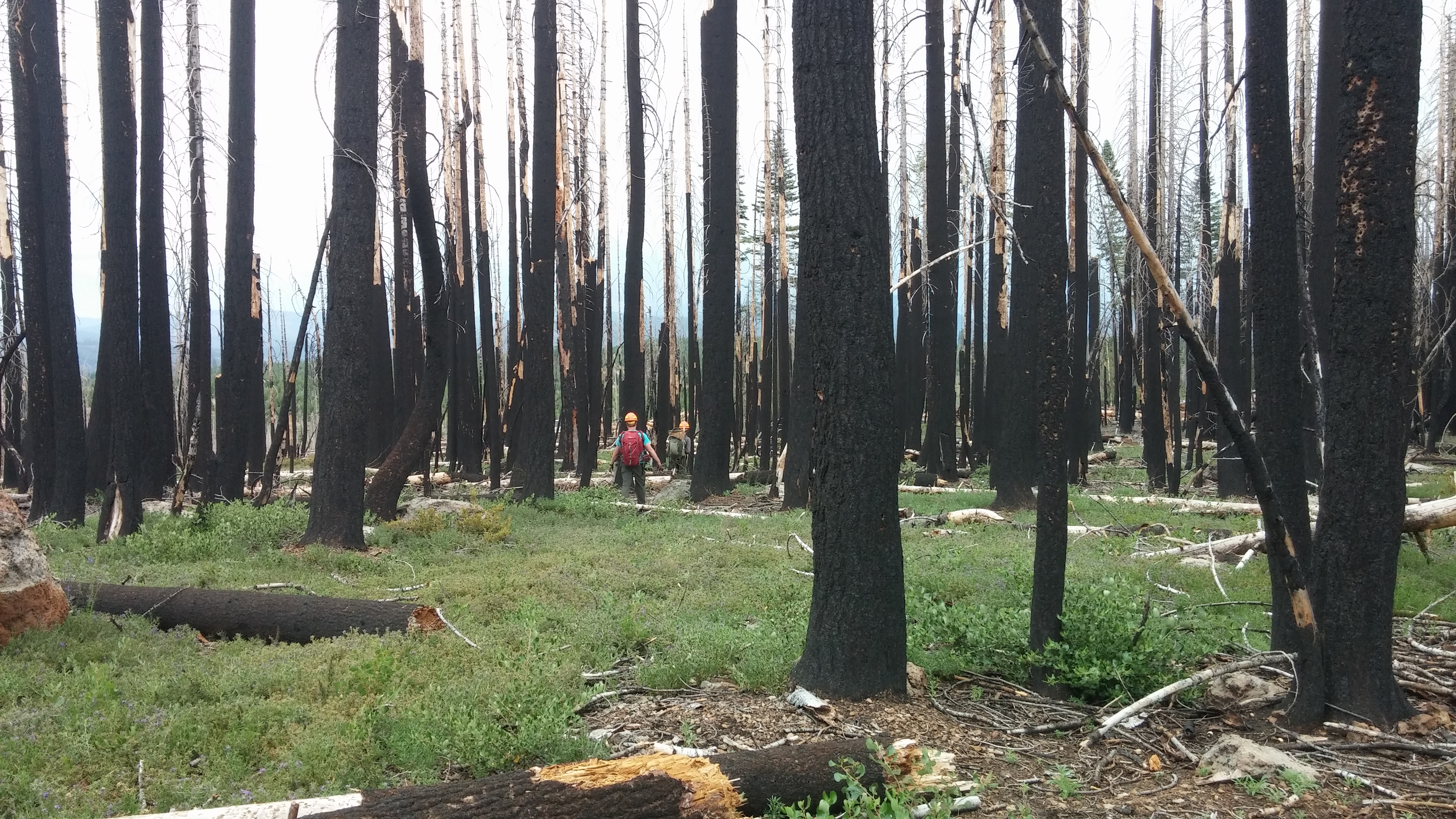MSU researcher receives $750K grant to examine effects of wildfire burn severity on soil health
Project is funded by USDA's National Institute of Food and Agriculture

EAST LANSING, Mich. — A Michigan State University-led research team has received a $750,000 grant from the U.S. Department of Agriculture’s National Institute of Food and Agriculture to study how the burn severity of wildfires affects soil health.
Leading the project is Jessica Miesel, an associate professor in the MSU Department of Plant, Soil and Microbial Sciences and core faculty member in the Ecology, Evolution, and Behavior Program. Miesel specializes in fire and ecosystem ecology, and also holds an appointment in the MSU Department of Forestry. Alongside Miesel are ecologists Matt Dickinson of the U.S. Forest Service and Erin Hanan of the University of Nevada, Reno, as well as MSU combustion engineer Indrek Wichman.
Natural fires that burn at low intensity perform crucial ecosystem services, Miesel said, such as clearing the forest floor of underbrush and debris. This allows the soil to allocate nutrients to the development of larger, healthier trees by reducing competition. Fire is also important for many animal species, ridding areas of thick brush and allowing for the growth of plants that serve as food sources and shelter.
When fires occur in extreme conditions and burn at high intensity, however, they can be devastating. In California, these types of fires have increased dramatically in recent years. The state saw 4.1 million acres scorched just last year.
According to the U.S. Forest Service, catastrophic wildfire is the single biggest threat to the ecosystem services delivered by forests. For example, California’s national forests sequester 2 million metric tons of carbon each year. Forests are also responsible for 50% of California’s water supply, an annual value of $9.5 billion. The state’s economy gets a boost from forest products as well, which pump in $140 million each year and support more than 110,000 jobs.
“Recently, annual firefighting costs have routinely surpassed the previous year,” Miesel said. “At this point, so many resources are being used to combat wildfires that many preventative management tactics are not able to be implemented.”

For the newly funded project, Miesel and her team are investigating how the severity of these fires affects the soil, which determines how forests and streams recover. Burn severity is measured by either remote sensing or field-based observations of soil and vegetation post-fire, factoring in the intensity and duration.
“High-intensity fire can deplete soil nutrients and reduce soil organic matter, hindering the ability of forests to recover,” she said. “Water quality in the area can be affected as well because the infiltration capacity of soil can be lessened, which leads to increased runoff and erosion.”
Researchers hypothesize that soil health — the capacity of soil to function as an essential living ecosystem that supports plants, animals and humans — is negatively influenced the longer and hotter a wildfire burns. But, Miesel said, the mechanisms that underpin this assumption are not well understood.
The team’s objectives are to:
- Identify and describe the relationships among fire characteristics, burn severity and soil heating.
- Determine the resistance and resilience of biological, chemical and physical indicators of soil health to fire, burn severity and soil heating.
- Discern the key factors driving soil responses to wildfire to continue to improve tools that guide forest and fire management decisions.
To accomplish these goals, a blend of field and laboratory approaches will be used. In the lab and using outdoor table-top setups, researchers will perform controlled experiments to replicate wildfire scenarios.
For field data, the team will leverage ongoing work by the Fire Behavior Assessment Team of the U.S. Forest Service. It includes 15 years of pre-, active- and post-fire data on forest biomass, composition and structure from active wildfires in California. In this study, soil carbon has been measured, but the new project will incorporate resilience of soil health in the long term.
Miesel said that one of the main objectives is to develop statistical models that characterize undesirable wildfire outcomes such as soil transformation and shrub conversion. These can help in the creation of management plans by defining the response thresholds that must be met to avoid long-term forest damage. The team plans to create a guide that summarizes the sites, soils, fuels, fire characteristics and burn severities that most likely lead to negative effects on soil health.
Information collected by the researchers will also be available via online fact sheets, as well as presentations and webinars delivered to forest managers.
“Wildfires are a recurring challenge that require urgent action,” Miesel said. “California is ground zero for this problem, and we’re thankful to our partners who help to advance our research in the area. We must increase the resilience of our forests or risk losing them and the necessary services they provide.”



 Print
Print Email
Email




